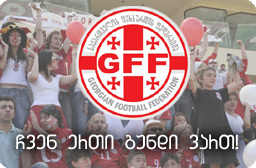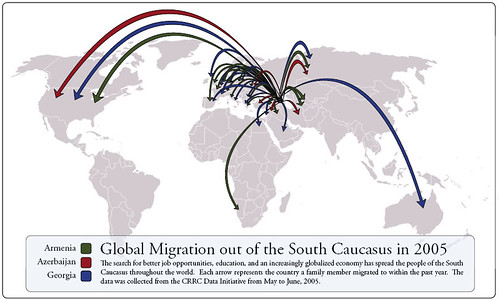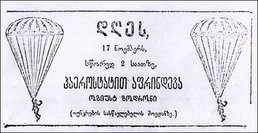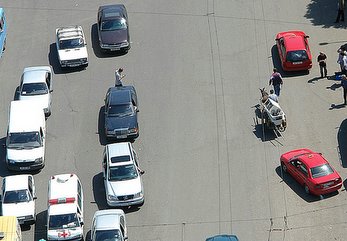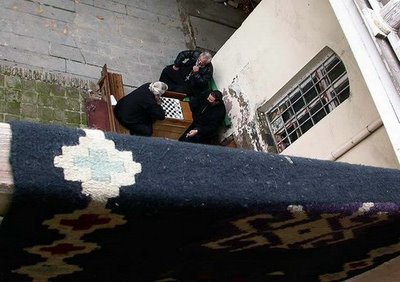Author: D. KhantadzeDoch aus den zahllosen bescheidenen Schritten, die von namenlosen Personen getan werden, wenn sie ihre gewohnten Aufgaben unter geänderten Umständen durchführen, entstehen die Vorbilder, die sich durchsetzen. Sie sind ebenso wichtig wie die großen intellektuellen Neuerungen, die klar als solche erkannt werden.
Friedrich A. von Hayek1) Einleitung Es können drei Arten von Problemen unterschieden werden, zu deren Lösung Wettbewerb als effektiver Mechanismus vom Nutzen sein kann: Anreiz-, Macht- und Wissensproblem.1 Da gesagt werden kann, dass der Wettbewerb immer stattfindet, sind für das Bestehen der wünschenswerten Wettbewerbsordnung die Regeln entscheidend, unter denen der Wettbewerb abläuft. In diesem Sinne kann unter der Systemtransformation der Übergang von einer ineffizienten Regelordnung zu einer zweckmäßigeren Regelordnung für Wettbewerb verstanden werden. Als Kriterium für die Beurteilung der Effizienz der Regeln für die Wirtschaft gilt die Konsumentensouveränität, die besagt, dass der Erfolg im Marktprozess nur durch eine bessere Befriedigung der Konsumenteninteressen erreicht werden soll („Leistungswettbewerb“). In der ordnungsökonomischen Sprache ausgedrückt, handelt es sich um den Unterschied zwischen „Rechtsordnung und Handelnsordnung“ (Hayek 1969): Dadurch wird betont, dass die Leistungsmerkmale der bestehenden Handelnsordnung (Marktsystem) von der bestehenden Rechtsordnung (Institutionen) abhängig sind.
Für Douglass North sind die in einer Gesellschaft bestehenden Institutionen Hauptbestimmungsfaktor der Leistungsfähigkeit der Wirtschaft (North 2005, 48). North hat sich eingehend in zahlreichen Beiträgen mit der Problematik der divergenten Entwicklung der Institutionen beschäftigt. Im Folgenden (Teil 2) wird sein letzter Beitrag (North 2005) dargestellt, in dem er die Ansätze für Verständnis des wirtschaftlichen Wandels vorstellt.2 Danach (Teil 3) sollen Norths Erkenntnisse mit der Theorie der kulturellen Evolution von F.A. von Hayek in Verbindung gebracht werden, um zu fragen, welche Schlussfolgerungen sich daraus für ordnungspolitische Gestaltung ergeben könnten.
2. Norths Verständnis des wirtschaftlichen Wandels Die Hauptschwierigkeit für den Menschen besteht nach North darin, mit dem „wahren Neuen“ umzugehen. Die Unvorhersehbarkeit der Welt wirft die Frage auf, wie die Anpassung an die sich ständig ändernde Umwelt sichergestellt werden kann. Norths Arbeit lässt sich in zwei Teile gliedern: 1) Entscheidungs- bzw. Erkenntnistheorie – North geht der Frage nach, wie die Menschen Entscheidungen treffen; dabei werden von North zwei Problembereiche identifiziert: die Entscheidungen werden unter Unsicherheit getroffen; die mentalen Modelle haben die Funktion, die Unsicherheit zu verringern. 2) Theorie des institutionellen Wandels: Erklärungsinteresse liegt darin, zu untersuchen, wie die in einer Gesellschaft bestehenden Institutionen vor dem Hintergrund der bestehenden mentalen Modelle geändert werden.
2.1. Norths Entscheidungstheorie North betont, dass Menschen Entscheidungen unter Unsicherheit treffen. Diese Entscheidungen werden nach ihm von mentalen Modellen beeinflusst, die ihrerseits durch Glaubenssysteme bestimmt sind. „As soon as we realize that we always have an imperfect grasp of „reality“ and frequently have contrasting and conflicting views of the human landscape, we can begin to get a handle on the process of human change. The process works as follows: the beliefs that humans hold determine the choices they make that, in turn, structure the changes in the human landscape” (North 2005, 23). Daher ist sein Interesse dem Zusammenhang zwischen kognitiven Prozessen, Glaubensformation und Institutionen gerichtet (North 2005, 25).
Norths Erkenntnistheorie ähnelt der von Hayek, indem North Erkenntnis als Klassifikation der Objekte versteht, die durch aus Kategorien bestehende Struktur ermöglicht wird. Das Lernen erfolgt durch Erfahrung, die durch Rückkopplungsprozesse entweder zur Modifikation der Kategorien und Modelle oder zu deren Verstärkung führen kann (North 2005, 25).
Mit Hilfe seiner Erkenntnistheorie will North zeigen, wie schwierig es ist, korrekte Wahrnehmung der Wirklichkeit zu haben. Die unterschiedlichen Umweltbedingungen führten zu unterschiedlichen religiösen Vorstellungen, dessen Folge unterschiedliche mentale Modelle waren. Dadurch erklärt North unterschiedliche kulturelle Traditionen. Das ist sofern für North von Bedeutung, weil die menschliche Wahrnehmung in Kultur, Kontext und Geschichte eingebettet ist.3
Die Erörterung der erkenntnistheoretischen Grundlagen stellt für North aber die Vorarbeit dar, weil sein Hauptinteresse in die Erklärung des institutionellen Wandels besteht.
2.2. Norths Theorie des institutionellen Wandels Institutionen definiert North als Beschränkungen, die von Menschen auf zwischenmenschliche Interaktionen auferlegt werden. „Those constraints (institutions) (together with standard constraints of economics) define the opportunity set in the economy“(North 2005, 59). Zwischen Institutionen und Glaubenssystemen wird folgende Beziehung angenommen: Glaubenssysteme stellen interne Repräsentation der menschlichen Umwelt dar. Bei Institutionen handelt es sich demgegenüber um Strukturen, die Menschen der eigenen Umgebung auferlegen, um gewünschte Ergebnisse zu erzielen. Die Änderung der Institutionen wird von Organisationen herbeigeführt. Damit will North auf die Glaubenssysteme derjenigen Organisationen aufmerksam machen, die imstande sind, die Institutionen zu gestalten. „Thus the structure of an economic market reflects the beliefs of those in a position to make the rules of the game, who enact rules that will produce the outcomes (that is, the sort of market) they desire, whether those desires are to create monopoly or to create a competitive market (always with the caveat that their beliefs may be incorrect and produce unanticipated consequences)” (North 2005, 50). Es sind die Vorstellungen und Ideen der Organisationen, die die Macht haben, Institutionen zu verändern, die bestimmen werden, ob ein Umverteilungs- oder produktives Spiel gespielt wird (North 2005, 63).
Nach North hängt die Antwort auf die Frage, warum einige Länder arm und andere reich sind, unmittelbar mit der Fragestellung zusammen, ob die jeweilige Gesellschaft die Annahme solcher Institutionen geschafft hat, die den unpersönlichen Tausch ermöglichen. Für ihn besteht der Gegensatz zwischen den Institutionen des persönlichen und unpersönlichen Tausches. Dieser Gegensatz ist darauf zurückzuführen, dass die Menschen ihre Dispositionen während des millionenjährigen Zusammenlebens in Jäger- und Sammlergruppen herausgebildet haben. Diese Dispositionen stellen vor allem aber Anpassung an die physische Umwelt dar. Daher fragt North nach Konsequenzen, die sich bei dem Versuch des Menschen ergeben, sich an die Probleme anzupassen, die von der menschlichen Umwelt ergeben. „Personal exchange by its very nature restricts the range of economic activity to clientism and repeated face-to-face interaction. Impersonal exchange entails a host of political, social, and economic institutions that ‘violate’ the innate genetic predispositions that evolved in the several million years of hunter/gatherer environments” (North 2005, S. 71). Der Übergang, der zu vollziehen ist, und den, wie North behauptet, bis dato nicht alle Gesellschaften durchgezogen haben, wird von Abraham und Platteau (2002, 26) folgendermaßen beschrieben: „What is required is a shift from a status-based and coercive society that relies on mutual control, respect of ranks, and strictly enforced codes of generosity, to an open society where free entry and exit, democratic governance (including acceptance of dissent), competence criteria, and socio-economic differentiation are used as guiding principles or expressly allowed to operate.”4 Den Vorteil der westlichen Welt sieht North in der Tatsache, dass es die Institutionen des unpersönlichen Tausches entwickeln konnte (North 2005, 100). Der Übergang vom persönlichen zum unpersönlichen Tausch impliziert auch, dass die Wirtschaft nicht als Nullsummenspiel, sondern als Positivsummenspiel wahrgenommen wird und ist entscheidender Punkt im Prozess des wirtschaftlichen Wandels (North 2005, 63).
North entwickelt somit sein Schema (beliefs → institutions → organizations → policies → outcomes) des wirtschaftlichen Wandels, in dem vor allem die Rolle von Organisationen betont wird: Organisationen sind es einerseits, die den institutionellen Wandel durchführen und andererseits sind es auch wiederum Organisationen, die an Erhaltung der bestehenden Institutionen interessiert sind und somit den Wandel verhindern (North 2005, 51).
Aufgrund seiner positiven Analyse des wirtschaftlichen Wandels kommt North eher zur pessimistischen Schlussfolgerung, die einzige Alternative bestehe darin, das Land, das über „formal and informal consensual political institutions“ (North 2005, 164) nicht verfügt, entweder einem wohlwollenden Diktator zu überantworten oder den NROs zu überlassen, was allerdings ein langwieriger Prozess des Lernens sein werde. Die normativen Schlussfolgerungen fallen bei North zu kurz und es erscheint lohnend zu sein, mit diesen Problemen aus ordnungsökonomischer Perspektive zu beschäftigen. Im Folgenden wird aber versucht, zu klären in welchem Verhältnis Norths Ansatz zu Hayeks Theorie der kulturellen Evolution steht.
3. Theorie der kulturellen Evolution und Wissensproblem Im Folgenden soll auf die Rolle der (religiösen) Glaubenssysteme eingegangen werden, weil North darin einer der Hauptursachen der wirtschaftlichen Stagnation sieht. „Problems posed by the transition of a belief system from one constructed to deal with the physical environment to one constructed to confront the complex problems of the human environment are at the core of the problems of economic development” (North 2005, 44). Dabei scheint vom Interesse zu sein, welche Rolle Religion bei Aneignung von Wissen spielen konnte. Wenn in der Wirtschaftswissenschaft davon ausgegangen wird, dass die Menschen rational handeln, dann ergibt sich die Frage, wo die religiösen Glaubenssysteme einzuordnen sind und welche Beziehung zur Rationalität und Wissen besteht. Der Anlass für diese Klärung besteht u.a. auch darin, die von North vorgeschlagenen Lösungen zu revidieren.
Bei Diskussion des Rationalitätsbegriffs kann es nützlich sein, zwischen Rationalitätsprinzip und Rationalitätshypothese zu unterscheiden (Vanberg 2005). Das Rationalitätsprinzip bedeutet, dass Menschen zielgerichtet handeln. Es besagt, dass „menschliches Handeln in dem Sinne rational ist, dass eine gewählte Handlung für den Handelnden die vorzugswürdigste Alternative darstellt, und zwar im Lichte der Präferenzen und der Theorien, die seine Entscheidung zum Zeitpunkt der Handlung bestimmen“ (Vanberg 2005, 35). Dem Subjektivismus des individuellen Wissens wird dadurch Rechnung getragen, dass die Rationalitätsannahme durch Rationalitätshypothese erweitert wird. Die Rationalitätshypothese5 stellt die empirisch falsifizierbare Behauptung auf, dass Menschen durch realitätsadäquate Theorien geleitet werden. Die Betonung der Theoriekomponente verweist auf die Subjektivität des individuellen Wissens.
Nun ist die Frage, was sind die Quellen des menschlichen Wissens. In Anlehnung an Hayek können wir zwischen drei Ebenen des Wissens unterscheiden: genetische, kulturelle und individuelle. Die genetische Ebene bezieht sich auf die gemeinsame Evolutionsgeschichte der Menschheit. Die Evolutionsbiologie wird herangezogen, um das auf genetische Ebene angesammelte Wissen zu erklären. So hat Konrad Lorenz die a priori Kategorien Kants im Lichte der Evolutionsbiologie interpretiert und sie als Ergebnisse der biologischen Evolution erklärt.6 Diese Ebene scheint für die ganze Menschheit gleiche zu sein und daher auch ungeeignet, die unterschiedlichen Entwicklungspfade der Gesellschaften zu erklären.
Von der genetischen Wissensebene ist, nach dem hier gewählten Ansatz, die Kultur zu unterscheiden. Unter kultureller Evolution soll verstanden werden: „ein Prozess des Wachstums von Wissen, und zwar nicht so sehr im Sinne einer Zunahme des Wissens einzelner Personen, als in dem Sinne, dass das im gesellschaftlichen Zusammenhang genutzte Wissen zunimmt“ (Vanberg 1994, S. 5). Die Wissensweitergabe von einer Generation auf die andere ist vielleicht am leichtesten in der Wissenschaft zu sehen, wo es um objektives Wissen im Sinne Poppers handelt und es über die Bibliotheken für die nächsten Generationen aufbewahrt wird. Der Punkt, den Hayek immer wieder betonte, ist, dass diese Art von Wissen nur ein Teil des gesamten Wissens darstellt. „Aber wenn dies auch der augenfälligste Teil unseres ererbten Wissensbestandes ist und der Hauptteil dessen, was wir notwendigerweise wissen, so ist es im gewöhnlichen Sinn von ‚Wissen’ doch nur ein Teil; denn außerdem verfügen wir über viele Werkzeuge –im weitesten Sinne des Wortes-, die die Menschheit entwickelt hat und die es uns ermöglichen, uns in unserer Umgebung zurechtzufinden“ (Hayek 1991, 35). Hayeks Begriff der Kultur umfasst einerseits selbst die Koordinationsmechanismen des Marktes, wie Eigentum, Preismechanismus, Geld, die die Nutzung des in der Gesellschaft bestehenden Wissens ermöglichen (Horizontale Wissensnutzung) – d.h. die Institutionen selbst sind für Hayek Teil der kulturellen Evolution, also Ergebnis der evolutorischen Prozesse. Diese kulturellen Leistungen können aber die zwischen den Gesellschaften bestehenden interkulturellen Unterschiede schwer erklären. Die zweite Komponente betrifft die vertikale Wissensnutzung von Wissen, die in Form von Traditionen und Institutionen besteht, die der Mensch gebraucht, „weil sie ihm als Ergebnis einer kumulativen Wachstums zur Verfügung stehen, ohne dass sie je von einem einzelnen Verstand erdacht worden sind“ (Hayek 1991, 36). Diese Art von Wissen verkörpert die in einer Gesellschaft über Generationen gesammelte implizite Erfahrung, wiederkehrende Probleme zu lösen.
Hayeks Arbeit lässt den Eindruck entstehen, dass er mehr denjenigen Teil der kulturellen Leistungen betonte, der für die ganze Menschheit gleich ist. Wie aber Norths Ausführungen nahe legen sollten, sind die interkulturellen Unterschiede zwischen den Gesellschaften von entscheidender Bedeutung. Andererseits hat man den Eindruck, dass North selbst zwischen diesen zwei Arten von Wissen nicht klar unterscheidet. So spricht North über die Fähigkeit der Kultur das Wissen zu sammeln und er betont auch Unterschiede zwischen amerikanischer und muslimischer Welt (North 2005, 36), es wird aber auf Glaubenssysteme und nicht auf Wissen, das Problemlösungspotenzial über wiederkehrende Probleme darstellt, Bezug genommen. Die Erklärung könnte darin liegen, dass North den wirtschaftlichen Wandel explizit nicht als evolutorischen Prozess betrachtet (North 2005, 66), sondern die Zielgerichtetheit des menschlichen Handelns betont. An sich kann man an diesem Argument nichts aussetzen, die Frage ist vielmehr, wieweit dieser Ansatz selbst ausreichend ist, die Probleme zu erörtern, an denen North interessiert ist. Sicherlich ist die Betonung der Rolle der Organisationen im bestimmten Kontext berechtigt, aber es erklärt nicht, wie North das selbst betont, den kulturellen Wandel (North 2005, 58). Norths Betonung der Rolle der Organisationen, die durch bewusste Entscheidung die institutionelle Struktur bestimmen, könnte so ausgelegt werden, dass die kulturellen Unterschiede von zweitrangiger Bedeutung sind. Das würde bedeuten, dass die wirtschaftliche Stagnation auf die „falschen“ formalen Institutionen (Gesetze) zurückzuführen ist, indem festgestellt werden konnte, jeweiliges Land verfüge über ineffiziente Institutionen, die durch Organisationen verabschiedet wurden, die aufgrund „falscher“ mentalen Modelle gehandelt hatten. Dadurch wird aber das Problem umgegangen, vor dem mindestens viele Transformationsländer stehen: Das Land verfügt zwar über gute formale Institutionen, die aber unter Implementierungsdefizite leiden. Daher erscheint die Kritik an North berechtigt, seine Theorie vermöge „den kontinuierlichen institutionellen und wirtschaftlichen Wandel in entwickelten Industriegesellschaften zu erklären. Sie [genüge] jedoch nicht dem eigenen Anspruch, eine allgemeine Theorie des institutionellen und wirtschaftlichen Wandels offerieren zu wollen“ (Leipold 2005, 61).
Geht man aber vom Kulturverständnis aus, das vor allem die Rolle des Wissens als praktischem Problemlösungspotenzial betont, könnten selbst die von North unterstrichenen religiösen Vorstellungen in anderem Lichte erscheinen.
Der „europäische Sonderweg“ bestand darin, dass in Europa geschichtlich individuelle Freiheit ermöglicht wurde. Sei es wegen Auseinandersetzungen zwischen Kirche und Staat oder wegen Systemwettbewerb zwischen unterschiedlichen Staaten. Was wichtig ist, es entstand der Rahmen, der geeignet war „die Immunisierung von Problemlösungen gegen Kritik zu erschweren, und Anreize zur Entdeckung neuer Lösungen und zu ihrer kritischen Untersuchung zu geben“ (Albert 1986, 53). Somit kann der Vorteil der „europäischen Kultur“ auch darin gesehen werden, dass es über größeres Problemlösungspotenzial verfügt als andere Kulturen. North (2005, 50) nennt dieses Wissen „artifactual structure“. Wenn aber die wirtschaftliche Leistung Europas mit Kultur in Verbindung gebracht werden kann, dann bedeutet das zuerst, dass die Menschen in anderen Kulturen, vor folgendem Problem stehen können: Es ändern sich die Präferenzen der Menschen, aber das kulturelle Erbe stellt nicht das Wissen bereit, um korrekte Theorien über die Erreichung der Ziele zu ermöglichen. Das Ergebnis dieser Art von „Wissensproblem“ könnte dann sein, dass Menschen auf „höhere“ Theorien zurückgreifen, um irgendwie die Welt weiterhin erklären zu können. Anders zu formulieren, die ausweitende Kluft zwischen Kompetenz – Schwierigkeit (Heiner, 1983) kann zur Beschränkung der Flexibilität im menschlichen Handeln führen. Diese „höheren“ Theorien können unterschiedlich aussehen, es könnte sich um Ideologie handeln (Kommunismus) oder auch um Religion.
Der einzige Unterschied des hier verfolgten Ansatzes im Vergleich zu Norths Ansatz kann nur darin liegen, dass diese Perspektive, wenn es stimmt, den Akzent auf das Wissensproblem setzt und nicht auf Glaubenssystem. North scheint das Hauptproblem in den falschen (religiösen) Glaubenssystemen zu sehen und seine Vorschläge zur Herstellung der Ordnung sind nicht gerade ermunternd. Während aus dem hier vorgeschlagenen Ansatz folgen würde, dass: 1. praktische Wirkung der Religion mit dem in der Gesellschaft akkumulierten Wissen in Verbindung gebracht wird; und 2. wenn man zeigen kann, wie dieses Wissen sich ändern kann, dann könnte auch das Problem der Glaubenssysteme überwunden werden, die nach North entscheidende Rolle im wirtschaftlichen Wandel zu spielen scheinen.
4. Ausblick Ordnungsökonomische Rezeptur für eine gute Wettbewerbsordnung des Marktes ist bekannt: Stärkung des Leistungswettbewerbs. Dafür ist der starke Staat im Sinne von Walter Eucken erforderlich, was für Hayek materiellen Rechtsstaat bedeutete. Materieller Rechtsstaat ist aber das, was Vanberg Herrschaft der aufgeklärten, konsensfähigen konstitutionellen Interessen nennt. Wie diese Interessen unter oben geschilderten Bedingungen zur Verwirklichung kommen könnten, soll untersucht werden. Dabei soll außer der Problematik der „falschen Mentalen Modelle“ im Sinne North auch der Tatsache Rechnung getragen werden, dass in jeder Gesellschaft jederzeit „Handelnsordnung“ im Sinne Hayek (1969) vorhanden ist, deren Änderung eigentliches Ziel der Reformen sein soll (Vanberg 1997). Wie die Handelnsordnung ihrerseits die Durchsetzungsprobleme des Rechts beeinflussen kann, soll auch geklärt werden.
Literaturverzeichnis
Abraham, A. and J.-P.Platteau.2002: “Participatory Development in the Presence of Endogenous Community Imperfections. Working Paper, University of Namur, Department of Economics. Zitiert nach North (2005).
Albert, H (1986): “Freiheit und Ordnung – Zwei Abhandlungen zum Problem einer offenen Gesellschaft”.
Hayek, F. A. (1969): “Freiburger Studien”.
Hayek, F.A. (1991): „Die Verfassung der Freiheit“.
Heiner, R. (1983): „The origin of predictable behavior”, in: The American Economic Review, Vol. 73, Nr. 4 (Sept., 1983), 560-595.
Leipold, H. (2005): “Kulturvergleichende Institutionenökonomik”.
Mantzavinos, C (2001): “Individuals, Institutions, and Markets”.
North, D.C. (2005): „Understanding the Process of Economic Change“.
Vanberg, V. (1997): “Systemtransformation, Ordnungsevolution und Protektion: Zum Problem der Anpassung von Wirtschaftssystemen an ihre Umwelt”, in: Cassel, D. (Hrsg.): „Institutionelle Probleme der Systemtransformation“
Vanberg, V. (2001): “The Constitution of Markets – Essays in Political Economy”.
Vanberg, V. (2005): “Rationalitätsprinzip und Rationalitätshypothese: Zum methodologischen Status der Theorie rationalen Handelns”, in: Siegenthaler, H. (Hrsg.): „Rationalität im Prozess kultureller Evolution“.
